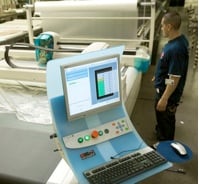Growth Insights for CEOs

Outsider Insights | From Hustle to System: Why More CEOs Are Rebuilding Their Sales Function
Outsider Insights
Across Chief Outsiders, we talk to hundreds of CEOs every month. In this new series, we explore the trends and challenges we’re hearing from these discussions – and what you can do if you’re facing the same issues in your business.
Recent Posts

Position Your Brand: Three Questions to Power Growth & Profit
Wed, May 11, 2016 — In Step 1, we began paving our road to a winning brand strategy with the basics. We determined that in order to win in a competitive consumer marketplace, we must first establish an emotional connection with our target audience. We also decided that remaining focused on emotional motivators is the key to the development of that critical connection. It’s time, now, to make sure we are winning with our “head,” as well as our “heart.” For the second step in our quest, we’ll don our lab coats and, utilizing the data from our emotional motivators and target audience surveys, we’ll now engage our sales and marketing teams to develop our company’s positioning statement and brand promise. If we can nail this critical “statement of purpose,” we’ll effectively stand out from our rivals and drive our company forward in the process.

Positioning Your Brand to Make an Emotional Connection
Fri, Apr 29, 2016 — According to an old adage, it is implored that we of the human species should “help yourself before you help others.” While this strategy is particularly important in oxygen-depleted aircraft cabin emergencies and personal matters (but was not great for people like Bernie Madoff), it also represents the foundation of modern marketing strategy.

Branding Like A Boss: How to Leave Your Mark
Wed, Apr 13, 2016 — Pity the CEO who has the misfortune of trying to build a corporate brand in the modern era. You see, way back in ancient times, when slow connection speeds had more to do with your supply ship being robbed by pirates; and broadcast advertisements were limited by the decibel levels of the hawker’s voice, branding was quite simple. A couple of strokes with a paintbrush or the sizzle of a hot iron was all that was needed to denote the origin of the goods.
Stay up-to-date with the latest from Chief Outsiders

Transforming an Organization: The 4 Steps Every CEO Should Take
Sun, Sep 15, 2013 — Companies can no longer settle for incremental improvement in today’s rapidly evolving and increasingly global economy—organizational transformation is necessary. McKinsey Quarterly, in their June 2011 issue offered the suggestion that in order to sustain high performance, organizations today must build the capacity to learn and keep changing over time and suggested that organizational health was perhaps the ultimate competitive advantage for today's economy. I can not stress more strongly how important the role of the CEO is in visibly participating in transforming an organization and how the CMO can assist in this process. I believe there is no single model for success, and actions will be influenced by the magnitude, need and nature of the change for an organization. But, in my experience there are four steps every CEO should take to transofrm an organization. I've found these basic change management steps always apply and can be scaled to fit every organizational transformation. The premise of these four steps a CEO should take to transform an organization is based on two important tenets that I believe must be considered when implementing an organizational transformation. First, it is people and relationships that make up organizations, not buildings, systems or processes. And second, most people don't like being forced out of their comfort zones and they must have a reason to do so. With that said – lets review the four steps for integrating change management into a new business strategy.

Leading Out Loud!
Thu, Aug 22, 2013 — By now, anyone who reads this blog knows that we read a lot. And a book I recently read is Leading Out Loud: Inspiring Change Through Authentic Communications, New and Revised by Terry Pearce (February 2013). The main point of the book is that a leader must speak in an authentic voice to build loyalty, commitment and enthusiasm in his or her organization. Pearce doesn’t just write this. He provides a step-by-step process to help leaders find their authentic voice. It is not an easy journey, but it's one that is worthwhile. “People make commitments to causes they value and people they respect and trust.”

Successful Family Business: 2nd Generation Growth Spurt
Sun, Mar 17, 2013 — We were in Dallas, attending the Vistage International Conference. The ballroom was packed with 1,100 CEOs and Vistage Chairs from across the country and around the world. It’s exciting to be around successful business leaders, anticipating that with your next handshake you’ll meet someone whose story will be one you can’t forget. That’s when I met Dan Mollura, a second-generation leader of a family business, Vinyl Technology, from Southern California. They design and manufacture an array of vinyl and plastic products for customers including the Army, Air Force, Defense Department, and NASA. He’d realized over 300% growth ($8M to over $30M) in the 7 years since taking over from his father. That’s amazing. But that’s not what got my attention. He said the reason for his success was that he was more conservative, more analytical, than his entrepreneurial Dad. Wow. I had to learn more. Breaking Up Before Breaking Out Dad was an immigrant from Argentina. He had been a pioneer in the waterbed business until the industry softened; then he’d started Vinyl Tech. With several sons, Dad had his eyes on Dan and began grooming him as his potential successor. But Dad was not ready to let go, and a falling-out resulted in Dan quitting, leaving the family business to pursue real estate. Eventually, Dad recognized he needed Dan back in the business and approached the brothers to ask Dan to come back. And he did. This act of rebellion and reconciliation was clearly the moment of truth for their successful transition. It took Dad two more years to fully let go, but the process was underway, and the ground rules understood.

5 Super Tips for a CEO Faced with a Media Interview
Wed, Mar 6, 2013 —

Making our Mistakes Pay – Rather than Paying for our Mistakes
Sun, Dec 9, 2012 — No one likes making mistakes, but we all make our fair share of them. Humans are fallible, products and processes fail, and things slip through the cracks. Even the best-managed companies can go awry. Unfortunately, mistakes are not only inevitable; they can also be very costly. As a CEO you know that mistakes can cause operations costs to rise and productivity to falter—and most damaging of all, they frustrate our customers so that they start thinking about taking their business elsewhere. If we act quickly to fix our mistakes, however, we can make our mistake pay off. Losing and replacing customers is expensive. 91% of unhappy customers will not willingly do business with us again (Source: U.S. Office of Consumer Affairs). If they have the option, they will take their business elsewhere. When customers leave us, we need to expend resources getting new ones—and it generally costs a great deal more to get a new customer than to keep an existing one. Think of the difference in the time, effort and money that goes into marketing and sales to bring in new business compared with how little effort it takes to stay connected with a customer you already have. Losing and replacing customers is expensive.

The CEO Is the Chief Team Builder
Tue, Nov 27, 2012 — The concept of team building has been around since the 1960s and continues to multiply as CEOs increasingly embrace developing people and teams as an indicator of their own leadership success. But, to be successful, effective team development for a CEO requires knowing when to do team building—and when not to do team building. I’ve seen CEOs insist on referring to their employees as a team and have pointed to how well their employees get along with one another as the metric of their effectiveness as a team. Calling a group of employees a team doesn’t make them a team, no matter how well they get along. They may just be a group of workers who really like one another—or at least have learned to pretend to like one another. When does a “Group” become a “Team”?
.png?width=1500&height=398&name=CO_Corporate%20Logo%202021_4C_HOR_FNL-1%20(1).png)